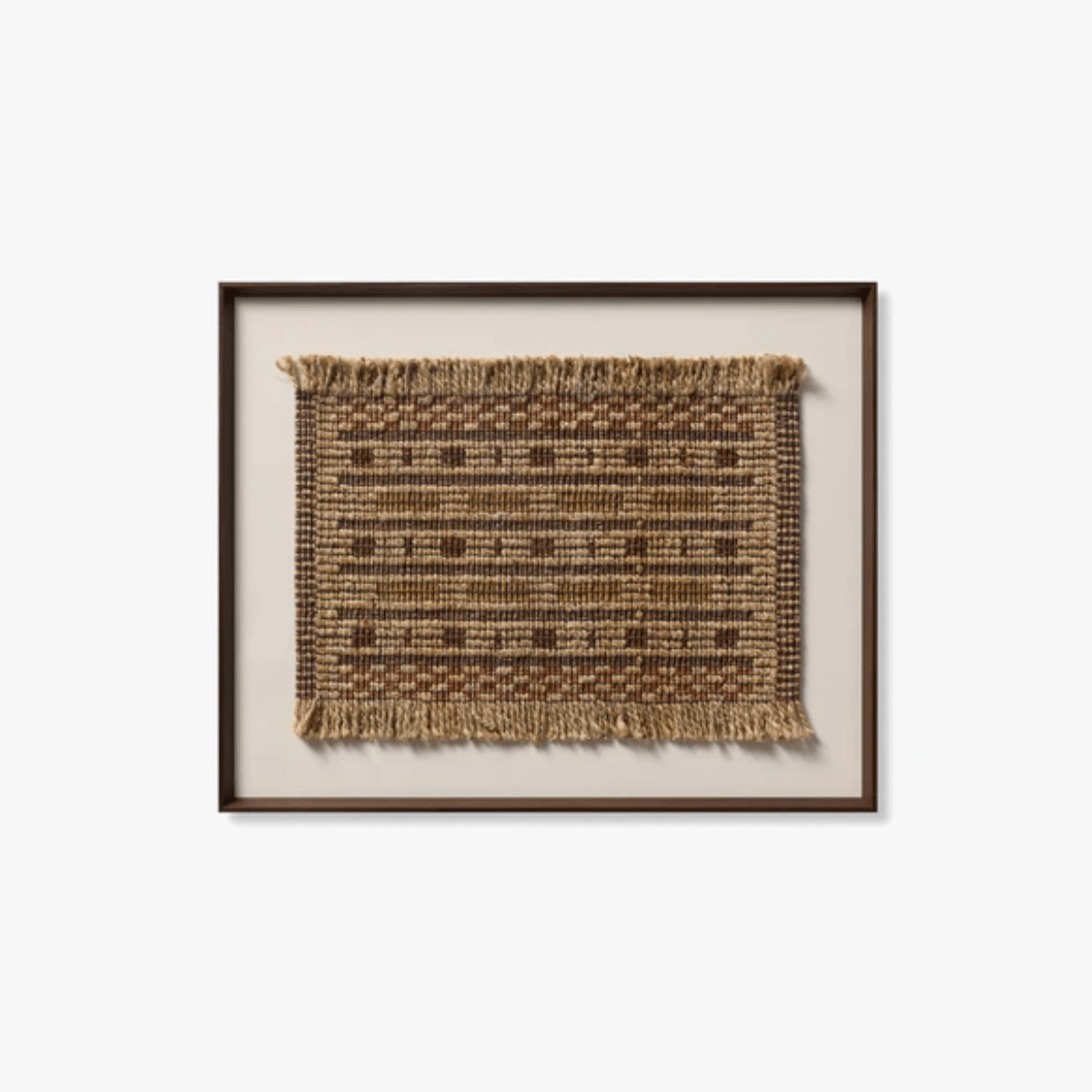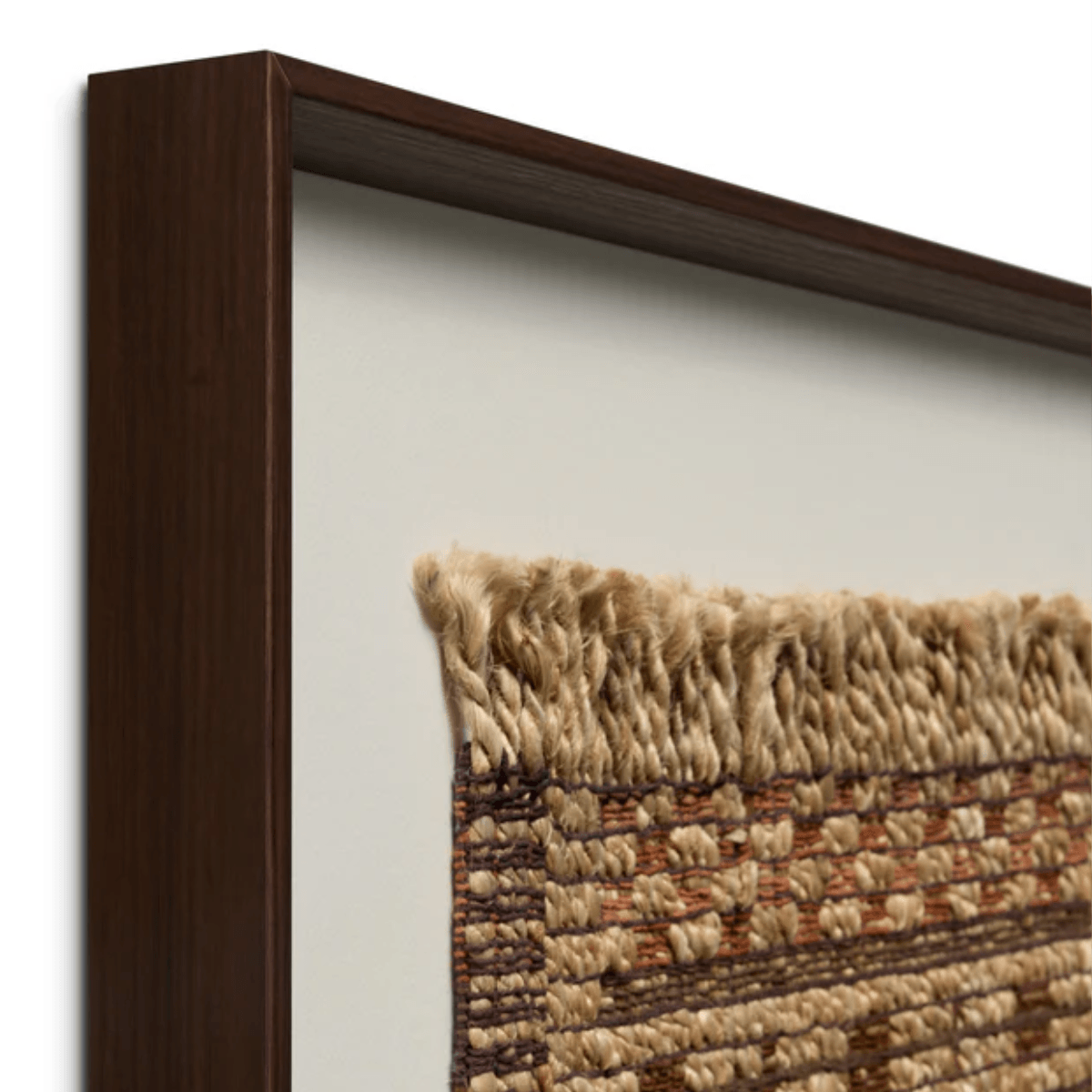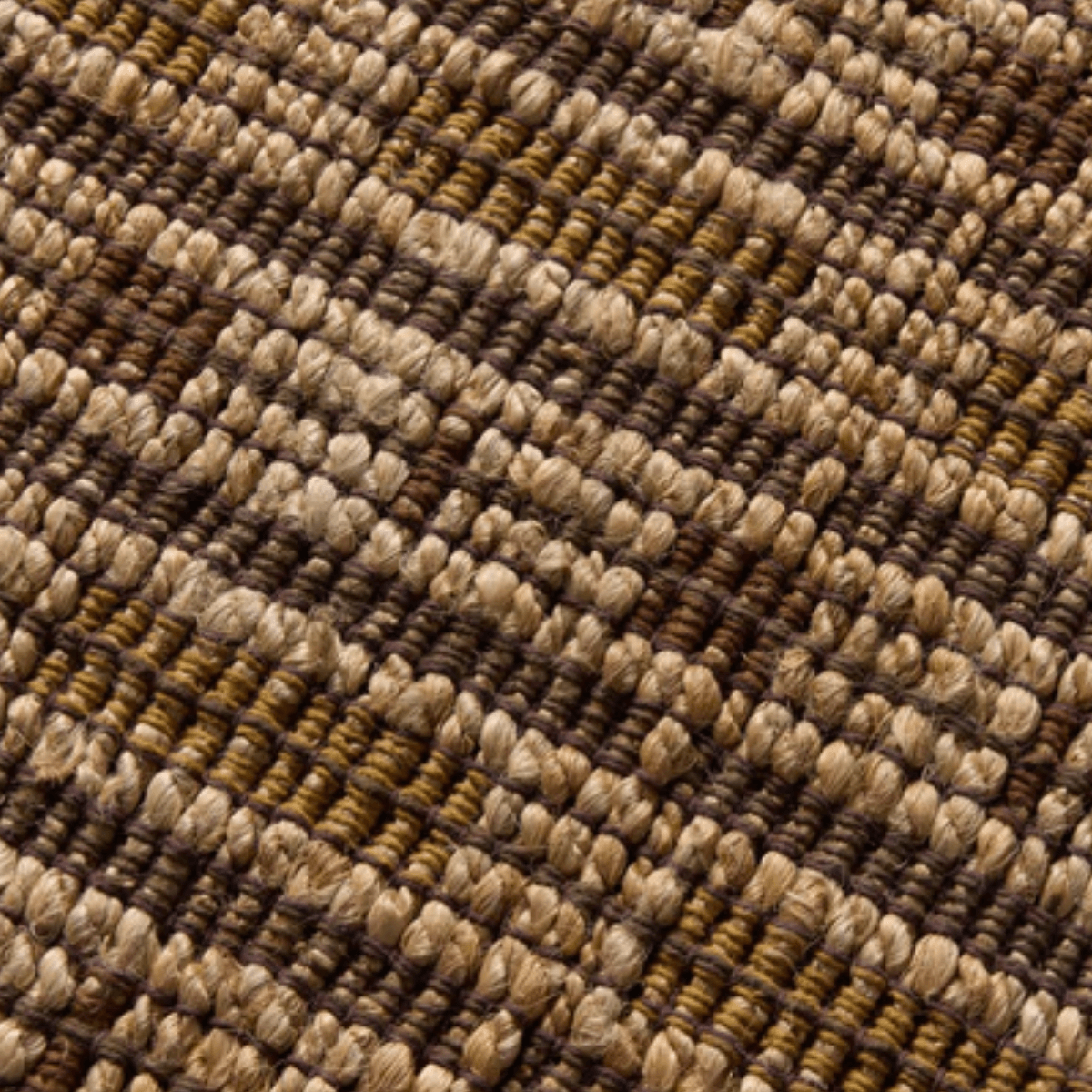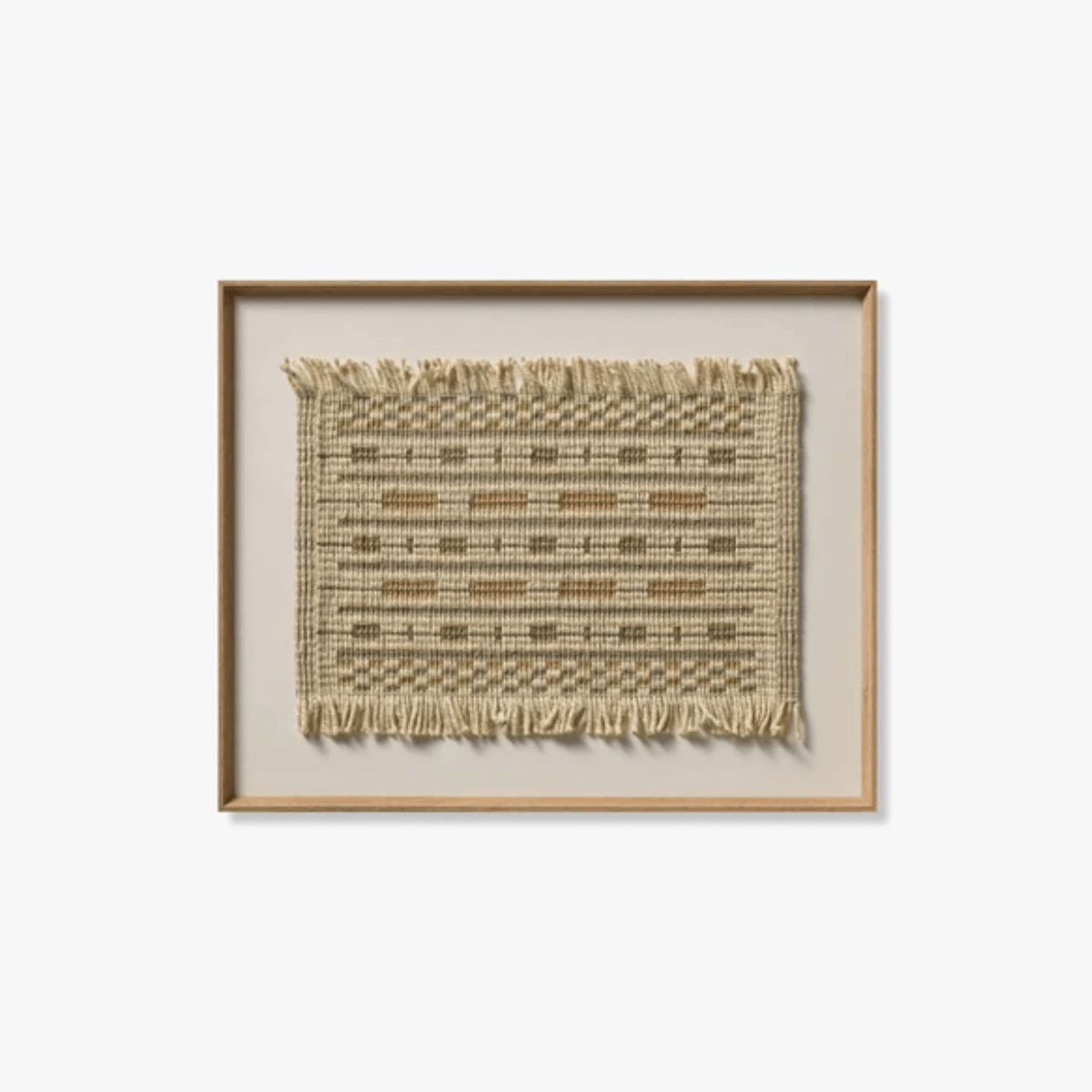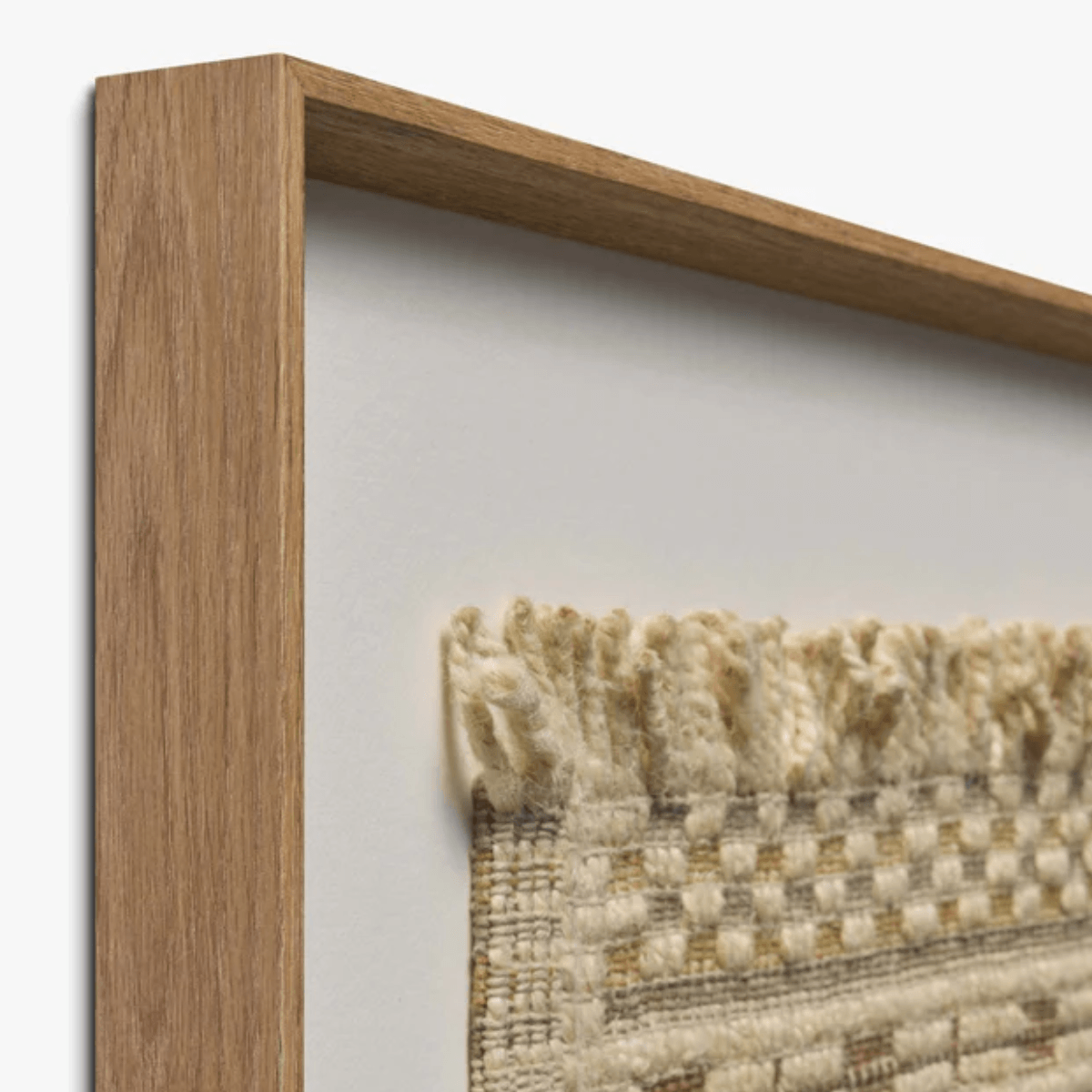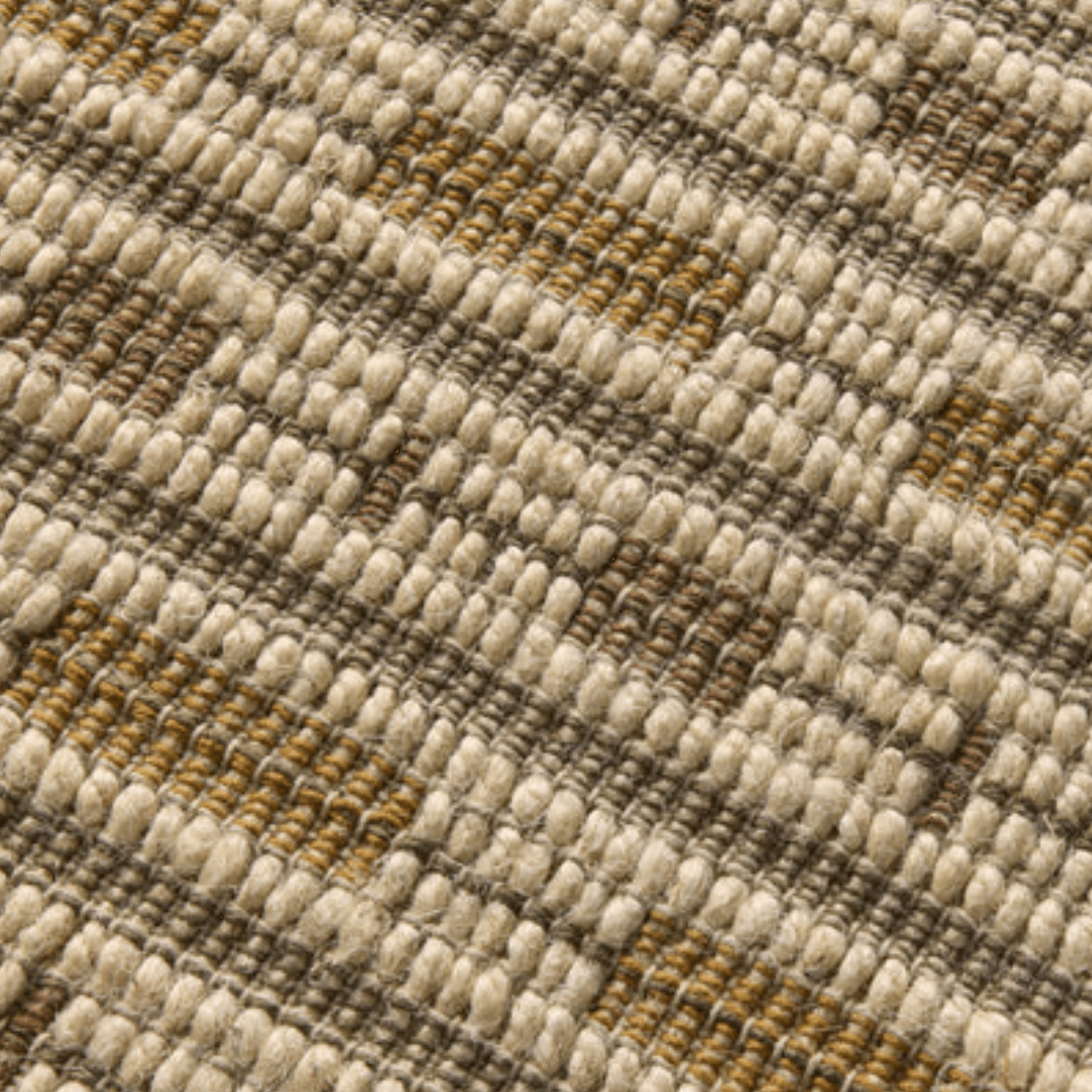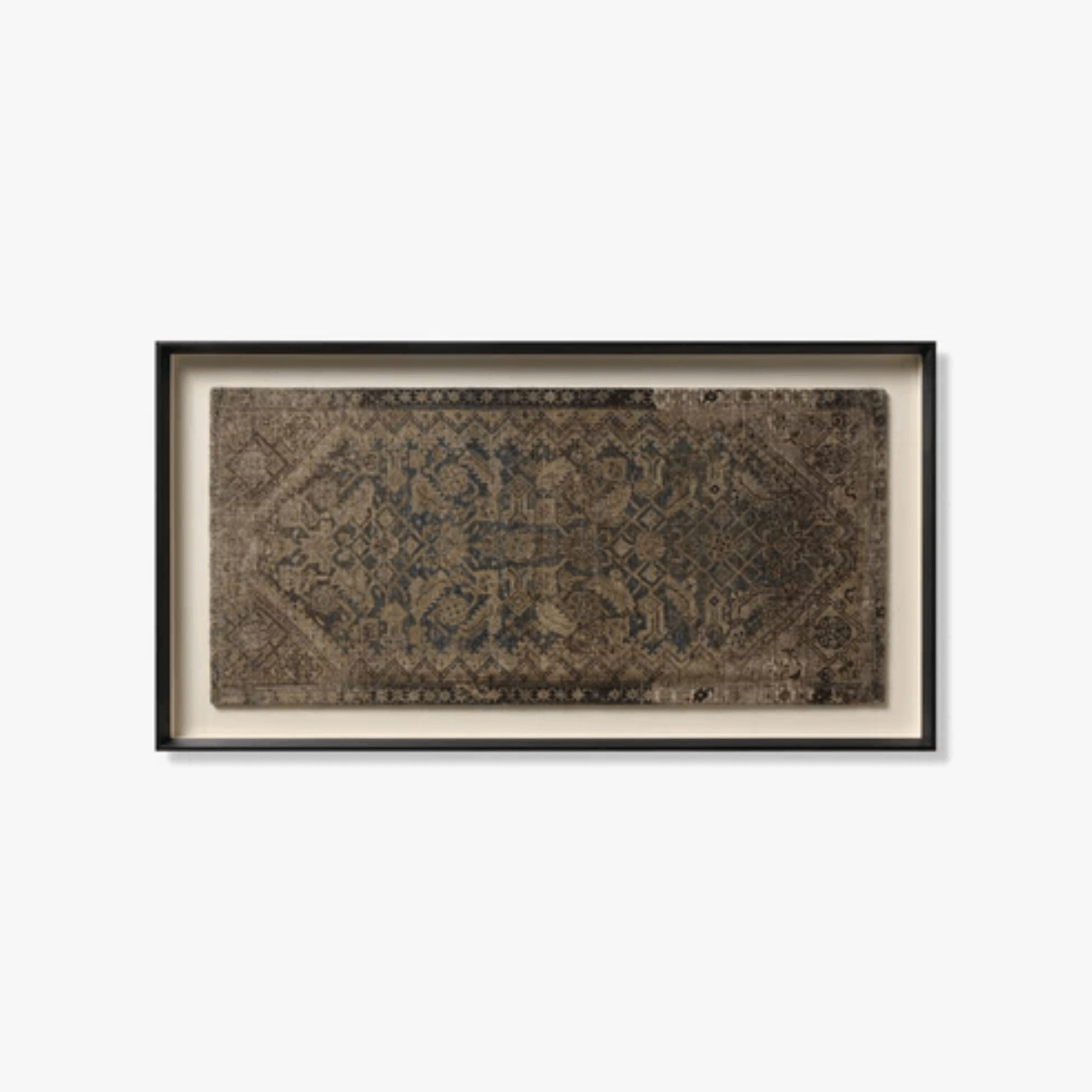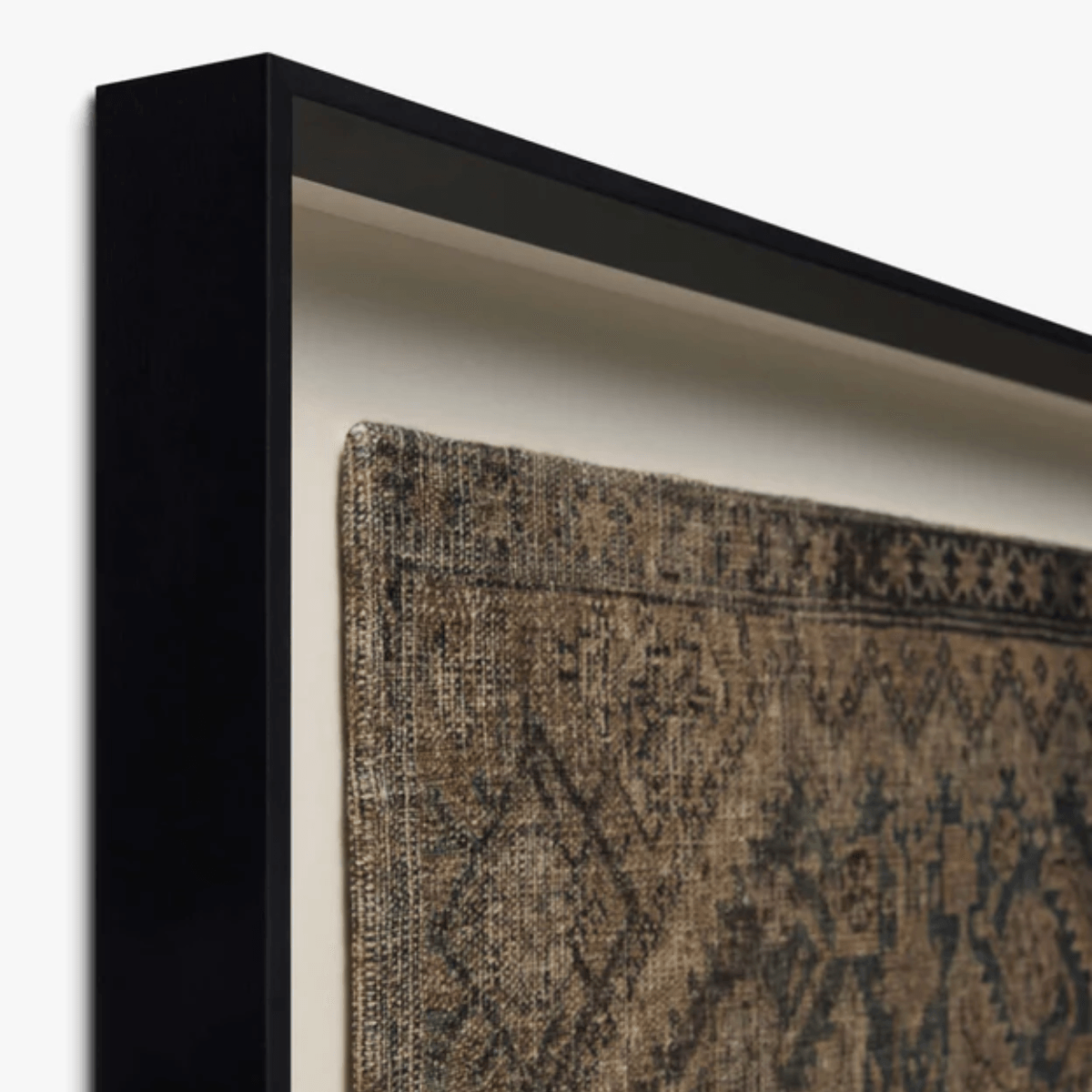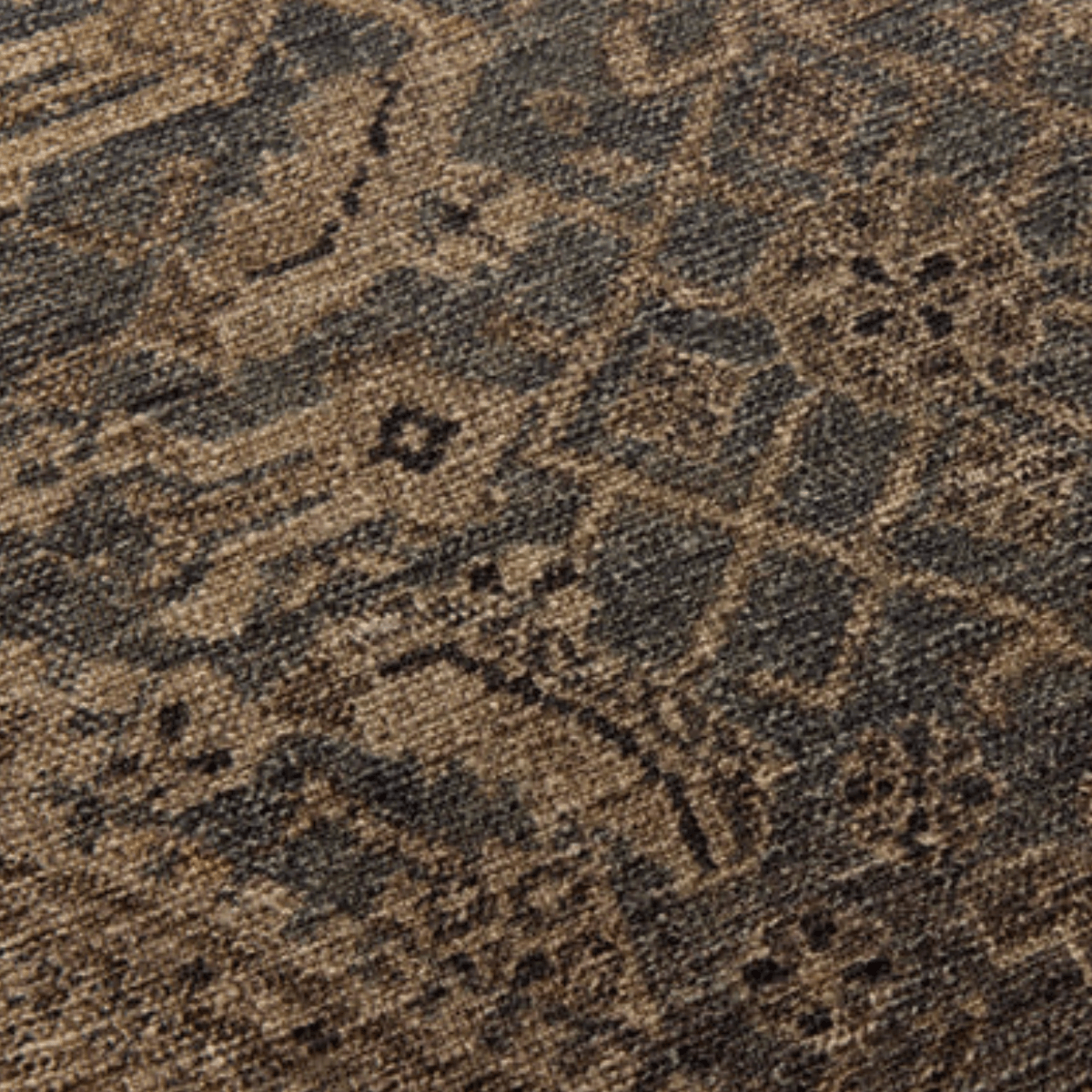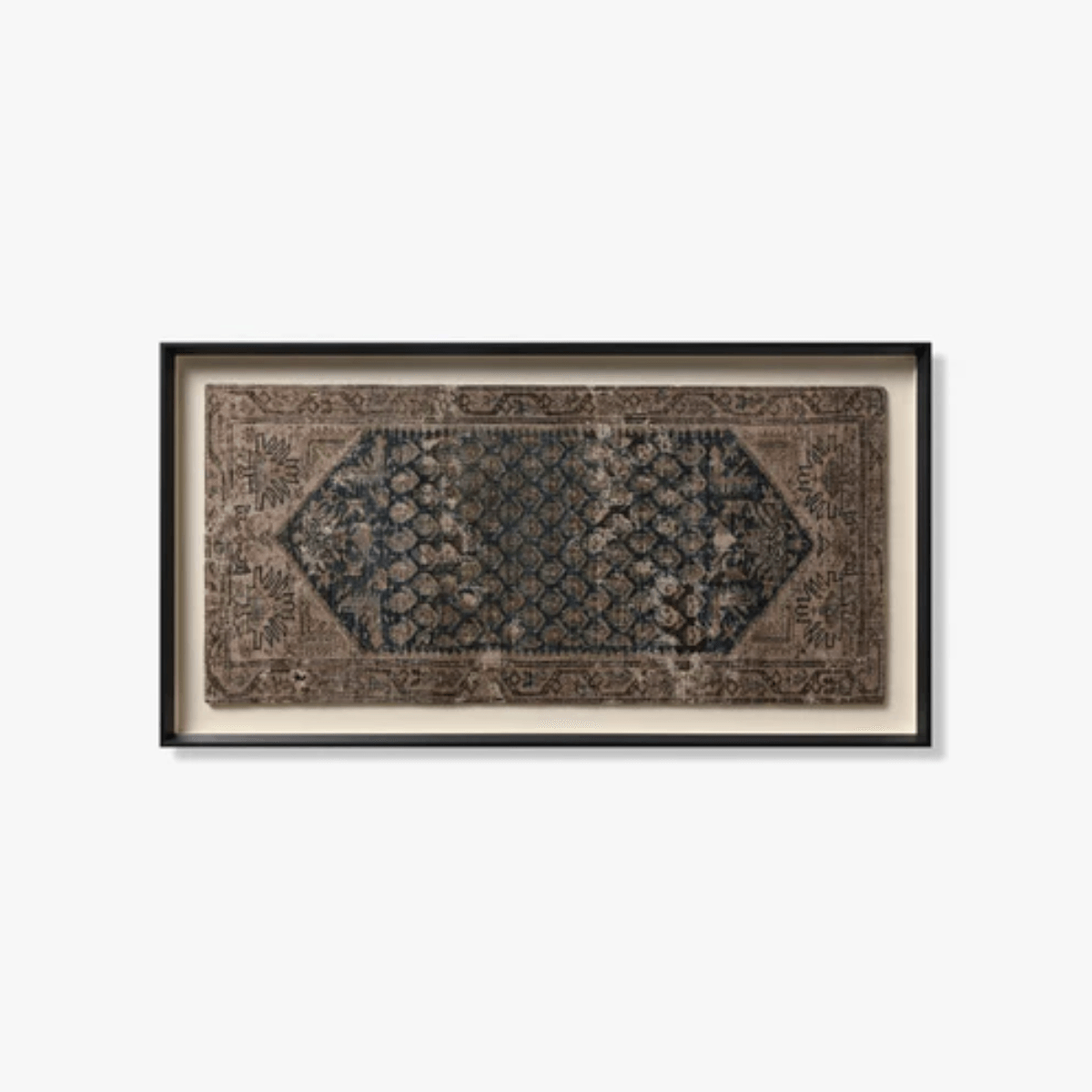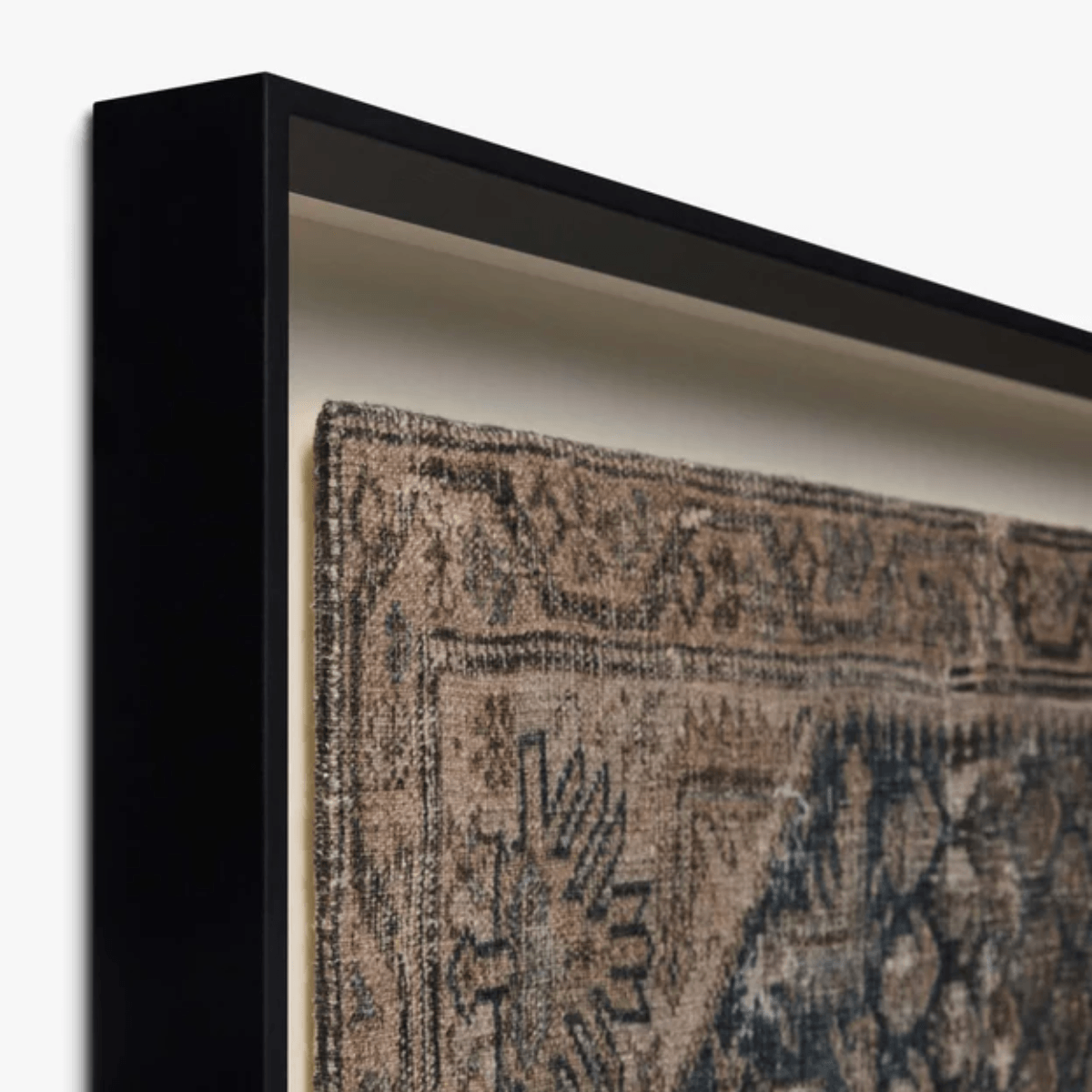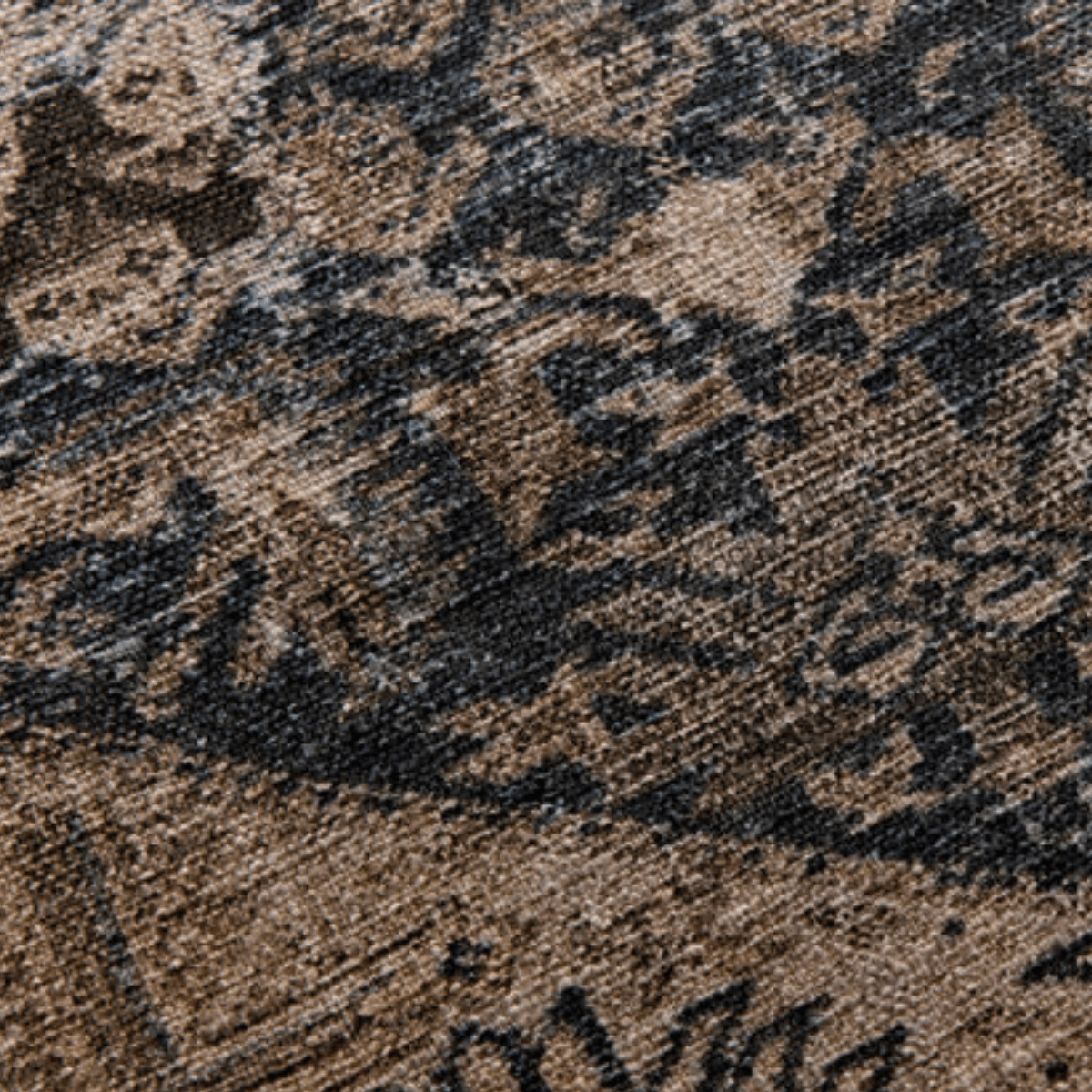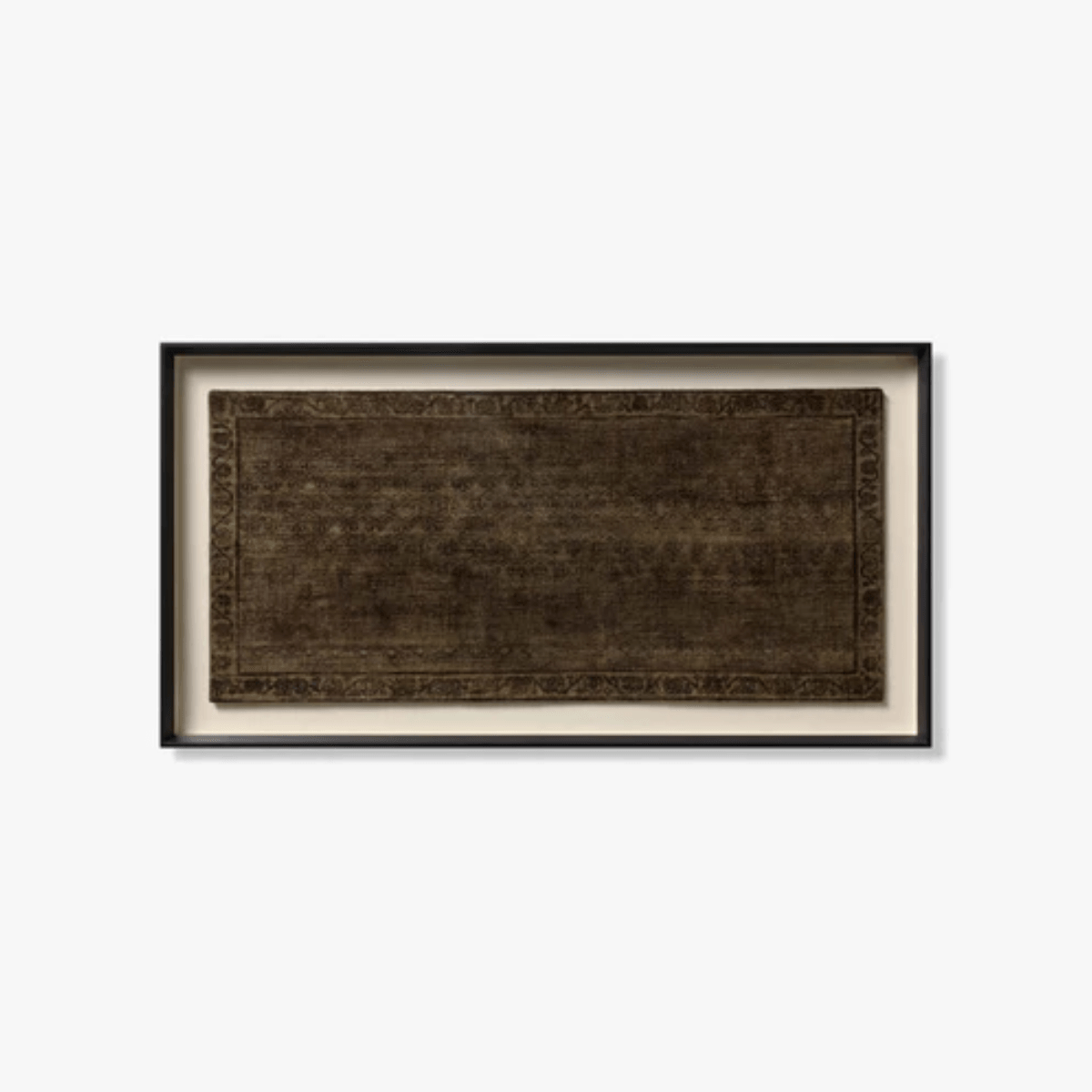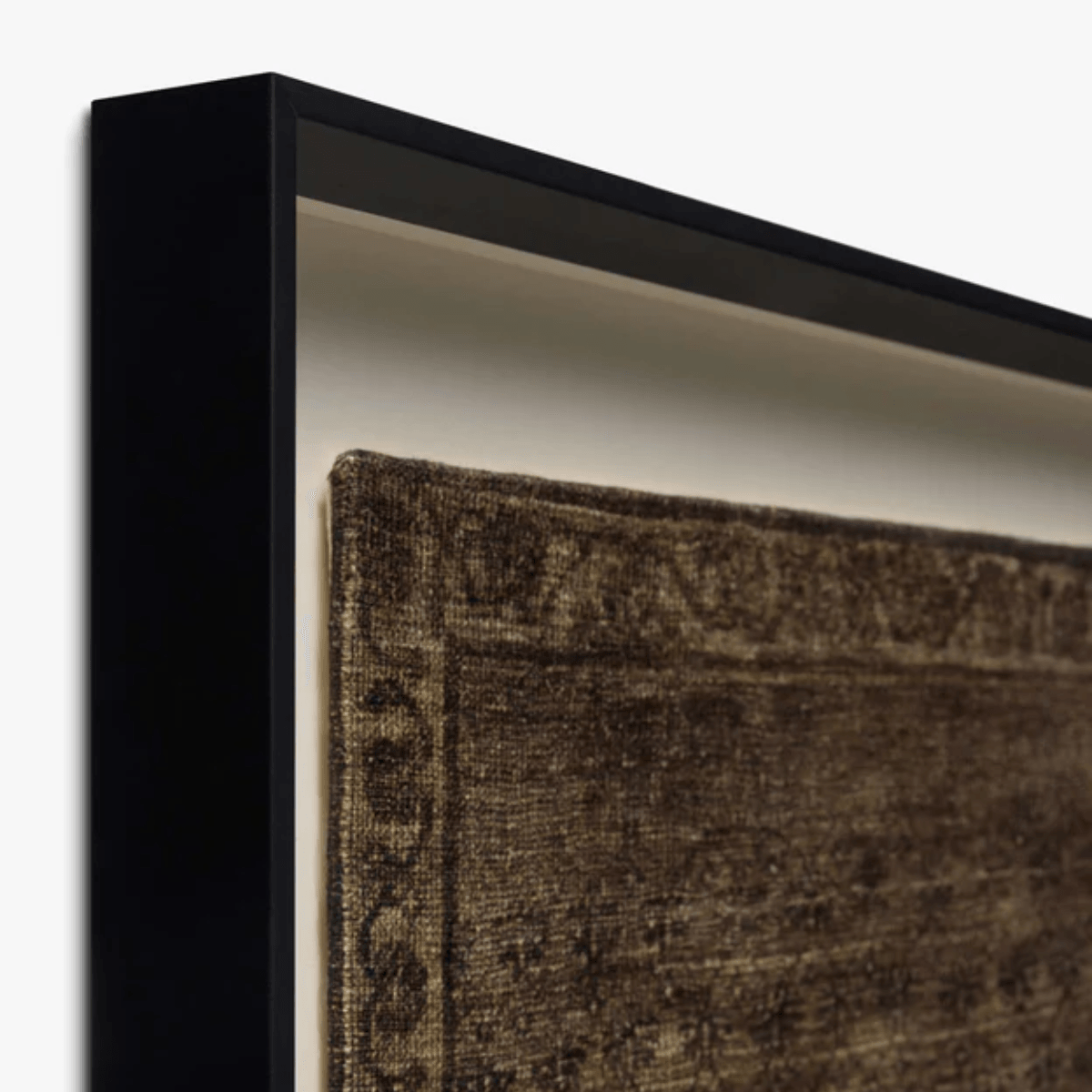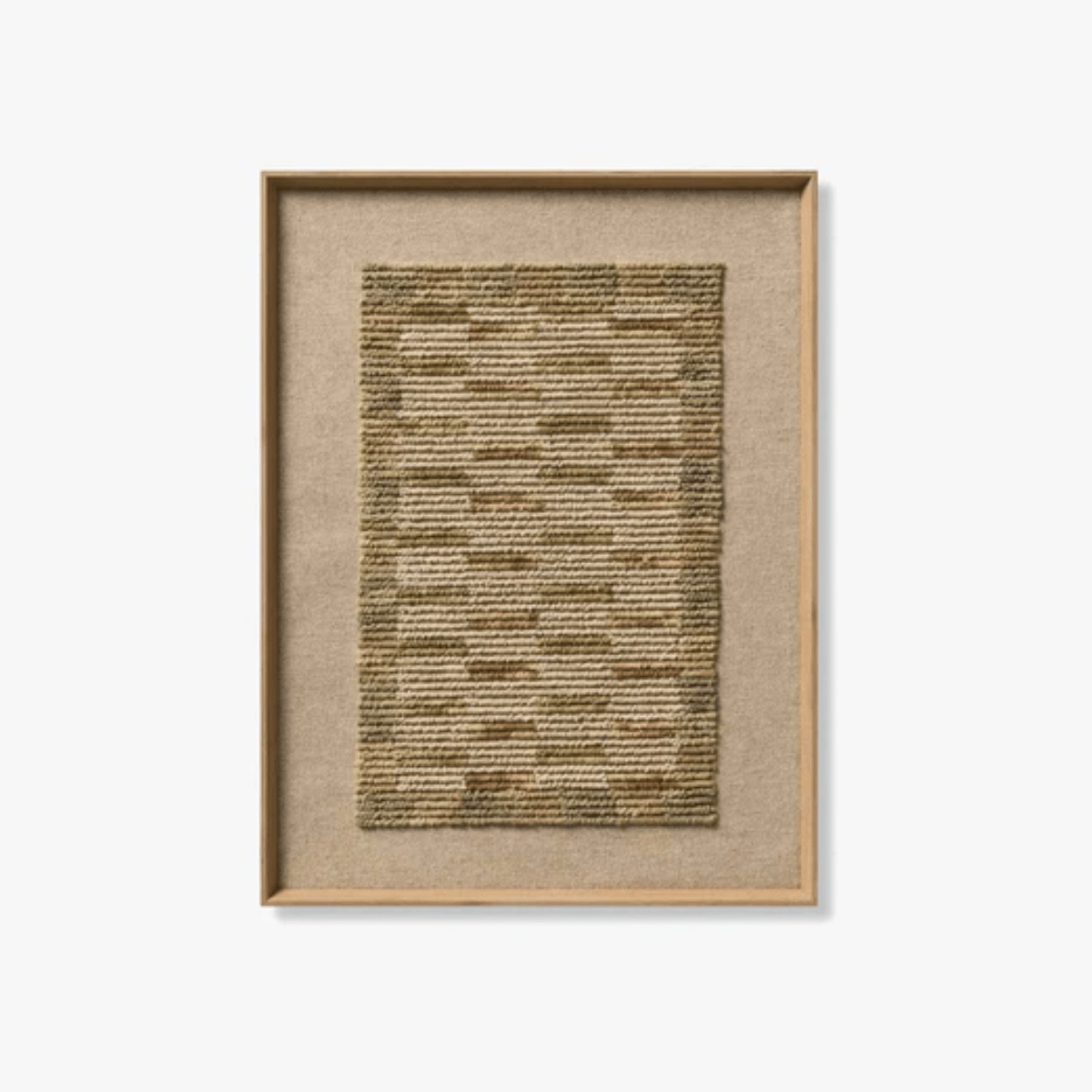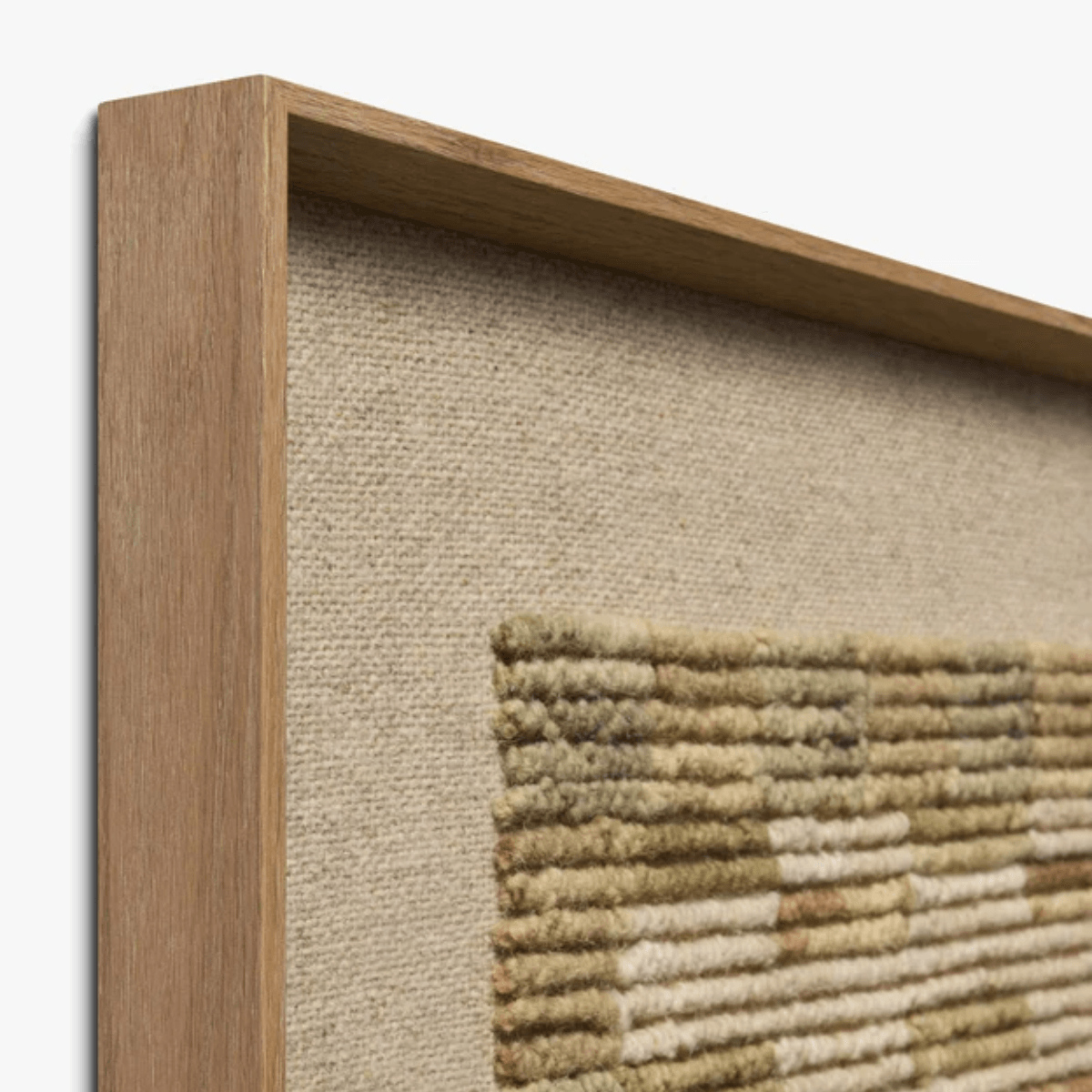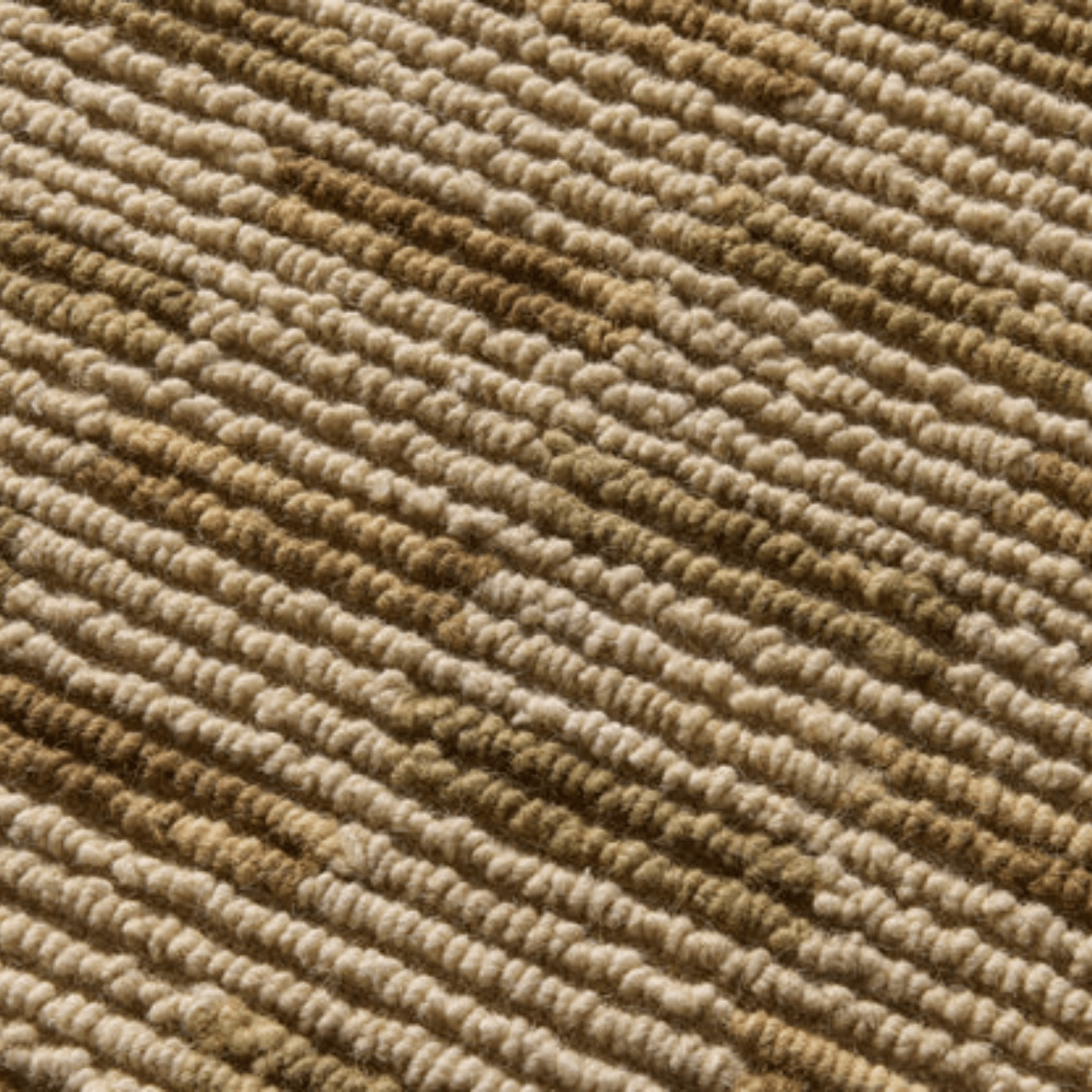There’s one big secret about gallery walls that no one will tell you: You can start one with a single piece of art. It’s true! That’s because once you find one spot where a painting, picture, or print looks good, you’ll surprise yourself with the spaces you discover in your own home to display your artistic style and personality.

Like most interior decorating projects, creating a gallery wall is much easier than you might expect; it just takes a little planning, and the results will be perfect. Here are a few questions to ask yourself when getting started:
What Are You Aiming For?
Consider the effect or impact you want your gallery wall to have. Do you want it to fill a space and be the forefront of your home’s aesthetic? Or do you want it to be more discrete and self-contained so it serves as more of an accent to the space it lives in? Both options are valid, and you can even apply different techniques in different rooms to bring more variety to your home.
If you want to spread your pieces widely across a wall, think about any themes or artistic styles you may want to convey as well. Placing works from similar artists or works that use similar styles next to each other can really make you feel like you have a professional art gallery right in your home. On the flip side, concentrating pieces in one smaller area can create a distinct gallery section, which can help you make the most of a small space.

Which Height Is Right?
The rule of thumb is that every piece should be hung so that its center is 4 ft 9 in (or 145 cm) above the ground. While this is a great starting point and will generally ensure your pieces are at a pleasant and natural-feeling height for you to enjoy, you can of course adjust as needed.
If your space has noticeably high ceilings or if you have to place your pieces around furniture, you may want to raise or lower your pieces so they feel more harmonious. Just remember: If you hang artwork behind a sofa or large piece of furniture, make sure the artwork isn’t as wide as the furniture. Try to aim for covering only two-thirds of the wall behind any large furniture.
What’s Your Line?
Your gallery wall can be as traditional or as innovative as you want; it’s supposed to reflect you, and the line of your gallery is a great way to achieve that.
There are six types of lines for gallery wall arrangements. They each offer something different, so consider where you want to use them and just make sure that on a given wall you don’t use too many different line types. (For instance, having a mid line on the left half of a wall and a base line on the right half of the wall could look uneven and distracting.)
Hint: If you’re hanging art in your dining room or area where you eat, set your line a little lower so that you can enjoy your gallery while seated.

- Mid Line: Hang pieces so that the vertical middle of every one is at the same height. Put the biggest piece in the center and use smaller pieces to taper off evenly on both sides.

- Base Line: Hang pieces so that the bottom of every one is at the same height. Very useful when you’re dealing with many differently sized pieces.

- Top Line: Hang pieces so that the top of every one is at the same height. Great to use in rooms with taller ceilings because the pieces appear to fill up the space more.
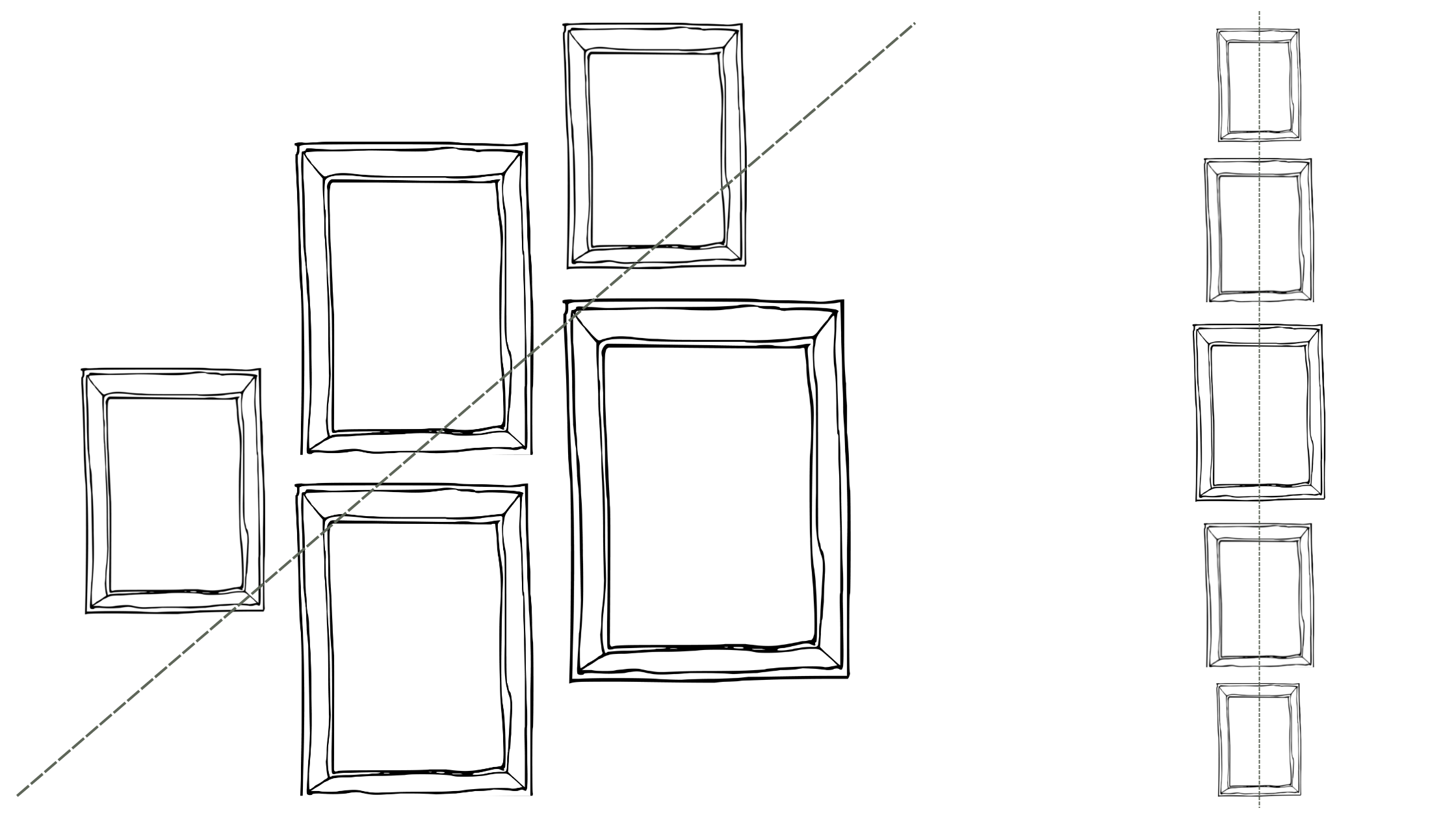
- Leading Line: Hang pieces in increasing or decreasing height so that they create a diagonal line for your eye to follow. Great opportunity for mixing pieces of different sizes, as well as mixing horizontal and vertical pieces. Just make sure that every piece is spaced out by the same amount (2 inches is recommended spacing).
- Plumb Line: Hang pieces from floor to ceiling so that the horizontal middle of every one lines up. Fun for smaller spaces.

- Wave Line: Starting with a hub piece at the center, hang pieces in arcs, making sure to evenly space every piece 2 inches apart. Excellent for mixing different sized pieces and fitting many pieces into a small space, and a fun alternative to the leading line.
What About Frames?
One of the biggest misconceptions about gallery walls is that every frame has to match. Luckily, that’s not true in the slightest. In fact, having frames made of different materials, colors, and thicknesses can help your wall feel even more lively.
Having a wide variety of frame styles can create a fun, eclectic atmosphere. More expressive frames can also balance out artworks that are more monochromatic or subtle, such as black and white photography. For artwork that is a little louder, brighter, or more colorful, try light color frames. And if you want a purely serene feeling, try to get frames that are either the same color, thickness, or material, as their cohesiveness will bring order to the entire space.

Quick Tips & Tricks
- Make a practice layout before hanging anything up. This is an easy way to see how all your pieces will fit together and it lets you make sure everything goes where you want it to before overcommitting. All you have to do is lay your pieces on the ground in front of where you plan to hang them and have a walk around the room.
- New frames come with paper inserts that list their dimensions. Rather than throwing these away, stick them to your wall as you plan your gallery so you have a clear idea of how things will look and feel before you go nailing any holes in your walls.
- Bigger pieces usually need to be farther from the eye to be seen properly, so in addition to considering where these kinds of pieces will fit on your walls, try to place it where you will be able to see it from far enough away to really appreciate it.



































